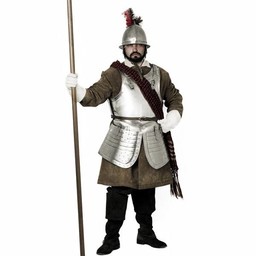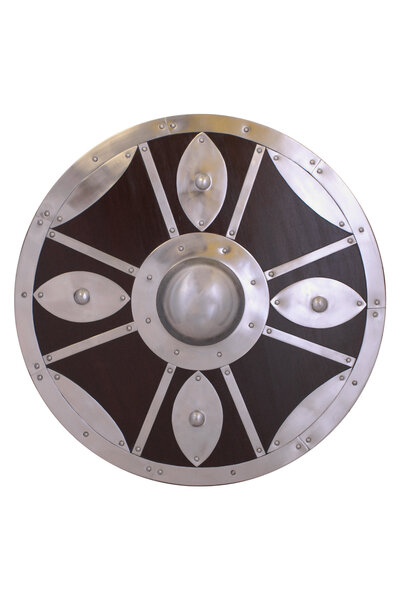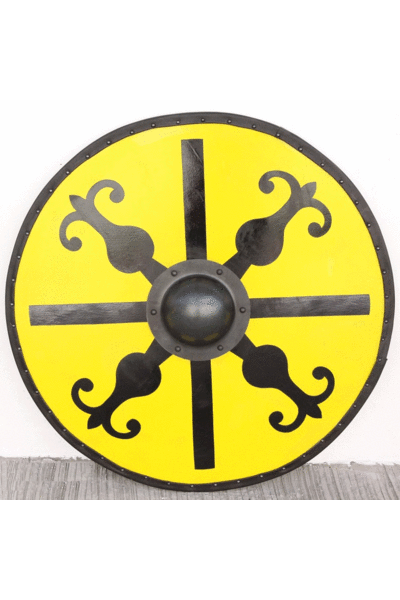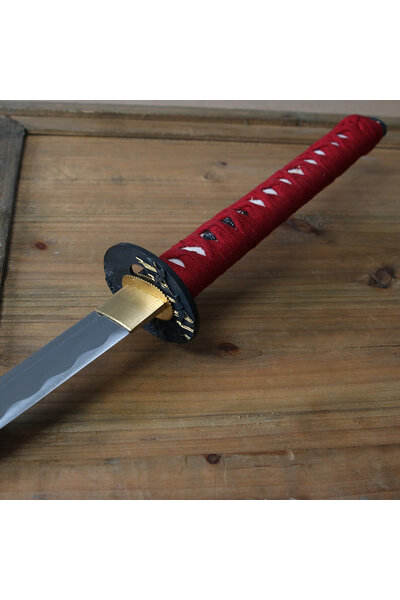Product description
Armour like this was worn in the 16th and early 17th century, presumably by the pikemen and Landsknechten in the European armies.
The straps of this breastplate are beaten with plates for solidity. The thigh pieces are made of several parts. The breastplate is delivered including backplate and has a steel thickness of 1,2 mm.
Product details:
Material: carbon steel;
Steel thickness: 1.2 mm;
Maximum breast circumference: 120-130 cm;
Based on a historical original: yes;
Transport weight (gram): 10000 *
Does this armour fit?
Do you wear a gambeson: add 10-15 cm to your circumference.
Do you wear a gambeson and hauberk: Add 15-20 cm to your circumference.
Tip: Is this armour too big for you? You can easily add extra padding.
Attaching armour & chainmail
To attach your armour or chainmail securely, you can attach leather laces to your gambeson and fasten these to your armour / chainmail. The armour thus remains in position during a fight.
Maintenance & care
Prevent rust and corrosion by oiling your armour regularly. Remove rust easily with black sandpaper.
This item is produced in limited quantities only. This means that every piece is unique. Sizes & finish may vary lightly from piece to piece.
Tip: How to adjust the finish of your armour and weaponry
Luxurious (polished)- polish the steel with metal polish or toothpaste. You can even give the item a mirror-like polish. Test on a small surface first!
Handmade (matte)- soak the steel in cola for 40 minutes to 20 hours. Check regularly and treat with black sandpaper.
Antique (patinated) leave the steel to rust for some time in a damp environment, preferably outside. Remove the red layer of rust, to reveal the corroded top layer.
Please note. After finishing the product yourself, the warranty and return right expire. Celtic WebMerchant is not responsible for the obtained result.
Packaged with 100% recycled material
When packaging this item, we exclusively use 100% recycled plastic and recycled paper/cardboard from FSC certified forests. We reuse a large part of the material directly without the intervention of a recycling process.
Recycle the material by separating your waste:
1. Cardboard: separate or reuse your paper.
2. Plastic cushions, clothing bags and plastic tape: separate or reuse your plastic. If possible, pierce the cushions with a volume reduction needle.
3. Paper packaging for jewelry and small items: these have a plastic inner layer. Remove these, then separate your paper and plastic.












